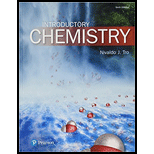
INTRODUCTORY CHEMISTRY-W/SEL.SOLN.MAN.
6th Edition
ISBN: 9780134845609
Author: Tro
Publisher: PEARSON
expand_more
expand_more
format_list_bulleted
Concept explainers
Textbook Question
Chapter 5, Problem 27E
Upon decomposition, one sample of magnesium fluoride produced 1.65 kg of magnesium and 2.57 kg of fluorine. A second sample produced 1.32 kg of magnesium. How much fluorine (in grams) did second sample produce? Remember that, according to the law of constant composition, the ratio of the masses of the two elements must be the same in both samples.
Expert Solution & Answer
Want to see the full answer?
Check out a sample textbook solution
Students have asked these similar questions
Using the appropriate bond energies, calculate the heat of reaction AH for the following reaction:
H-H + CI-CI
2 H-CI
You can find a table of bond energies by using the Data button on the ALEKS toolbar.
Round your answer to the nearest kJ/mol.
Note: For clarity, all lone pairs have been omitted from the molecular structures.
☐
kJ
mol
ค
000
Ar
B
Predict the hydrocarbon, of formula C6H10, needed to prepare the following geminal dibromide upon treatment with excess hydrobromic acid.
Note: The shown product is the only regioisomer formed in this reaction.
HBr
H₂C.
CH3
draw the major product formed with the listed reagents
Chapter 5 Solutions
INTRODUCTORY CHEMISTRY-W/SEL.SOLN.MAN.
Ch. 5 - Q1. Carbon tetrachloride has a chlorine - to-...Ch. 5 - Write a chemical formula for a compound that...Ch. 5 - Q3. How many oxygen atoms are in the chemical...Ch. 5 - Which element is a molecular element? a. Copper b....Ch. 5 - Q5. Which compound is ionic?
a.
b.
c.
d.
Ch. 5 - Write a formula for the compound that forms...Ch. 5 - Prob. 7SAQCh. 5 - Prob. 8SAQCh. 5 - Name the compound CrCl3 a. monochromium...Ch. 5 - Name the compound BaSO4 a. barium sulfate b....
Ch. 5 - Name the compound PF5. a. monophosphorus...Ch. 5 - Q12. What is the formula for manganese (III)...Ch. 5 - Q13. Name the acid (aq).
a. hydrogen phosphate
b....Ch. 5 - What is the formula for hydrobromic acid? a. HBr...Ch. 5 - Prob. 15SAQCh. 5 - 1. Do the properties of an element change when it...Ch. 5 - How might the world be different if elements did...Ch. 5 - What is the law of constant composition? Who...Ch. 5 - 4. What is a chemical formula? List some examples....Ch. 5 - 5. In a chemical formula, which element is listed...Ch. 5 - Prob. 6ECh. 5 - 7. Explain the difference between a molecular...Ch. 5 - What is a structural formula? What is the...Ch. 5 - What is the difference between a molecular element...Ch. 5 - Prob. 10ECh. 5 - What is the difference between a common name for a...Ch. 5 - List the metals that only one type of ion (that...Ch. 5 - Prob. 13ECh. 5 - Prob. 14ECh. 5 - Prob. 15ECh. 5 - Prob. 16ECh. 5 - Prob. 17ECh. 5 - Prob. 18ECh. 5 - What is the basic form for the named of molecular...Ch. 5 - How many atoms does each prefix specify? Mono-,...Ch. 5 - Prob. 21ECh. 5 - Prob. 22ECh. 5 - Prob. 23ECh. 5 - Prob. 24ECh. 5 - Two samples of sodium chloride are decomposed into...Ch. 5 - Two samples of carbon tetrachloride are decomposed...Ch. 5 - 27. Upon decomposition, one sample of magnesium...Ch. 5 - The mass ratio of sodium to fluorine in sodium...Ch. 5 - Use the law of constant composition to complete...Ch. 5 - Use the law of constant composition to complete...Ch. 5 - Prob. 31ECh. 5 - Prob. 32ECh. 5 - Prob. 33ECh. 5 - Prob. 34ECh. 5 - 35. How many oxygen atoms are in each chemical...Ch. 5 - 35. How many oxygen atoms are in each chemical...Ch. 5 - Determine the number of each type of atom in each...Ch. 5 - Determine the number of each type of atom in each...Ch. 5 - Prob. 39ECh. 5 - Complete the table. Formula Number of SO42units...Ch. 5 - 41. Give the empirical formula that corresponds to...Ch. 5 - 42. Give the empire formula that corresponds to...Ch. 5 - 43. Classify each element as atomic or...Ch. 5 - 44. Which elements have molecules as their basic...Ch. 5 - Classify each compound as ionic or molecular. a....Ch. 5 - Classify each compound as ionic or molecular. a....Ch. 5 - Match the substance on the left with the basic...Ch. 5 - Prob. 48ECh. 5 - What are the basic unitssingle atoms, molecules,...Ch. 5 - What are the basic unitssingle atoms molecules, or...Ch. 5 - 51. Classify each compound as ionic or molecular....Ch. 5 - 52. Classify each compound as ionic or molecular....Ch. 5 - 53. Write a formula for the ionic compound that...Ch. 5 - Write a formula for the ionic compound that forms...Ch. 5 - Prob. 55ECh. 5 - 56. Write a formula for the compound that forms...Ch. 5 - Prob. 57ECh. 5 - Prob. 58ECh. 5 - 59. Name each ionic compound. In each of these...Ch. 5 - 60 Name each ionic compound. In each of these...Ch. 5 - Prob. 61ECh. 5 - Prob. 62ECh. 5 - Determine whether the metal in each ionic compound...Ch. 5 - Prob. 64ECh. 5 - Prob. 65ECh. 5 - Prob. 66ECh. 5 - Prob. 67ECh. 5 - Prob. 68ECh. 5 - Prob. 69ECh. 5 - Prob. 70ECh. 5 - 71. Name each molecular compound.
a.
b.
c. NO
d....Ch. 5 - 72. Name each molecular compound.
a.
b.
C.
d....Ch. 5 - 73. Write a formula for each molecular compound...Ch. 5 - Write a formula for each molecular compound. a....Ch. 5 - Determine whether the name shown for each...Ch. 5 - Prob. 76ECh. 5 - Prob. 77ECh. 5 - Prob. 78ECh. 5 - Prob. 79ECh. 5 - 80. Name each acid (Hint: The names of the...Ch. 5 - 81. Write a formula for each acid.
a. phosphoric...Ch. 5 - Write a formula for each acid. a. hydrofluoric...Ch. 5 - 83. Calculate the formula mass for each...Ch. 5 - Calculate the formula mass for each compound. a....Ch. 5 - Prob. 85ECh. 5 - Prob. 86ECh. 5 - Prob. 87ECh. 5 - Prob. 88ECh. 5 - 89. How many chlorine atoms are in each set?
a....Ch. 5 - Prob. 90ECh. 5 - Prob. 91ECh. 5 - Prob. 92ECh. 5 - Prob. 93ECh. 5 - Prob. 94ECh. 5 - Prob. 95ECh. 5 - Prob. 96ECh. 5 - 97. For each compound, list the correct formula...Ch. 5 - For each compound, list the correct formula and...Ch. 5 - 99. Name each compound and calculate its formula...Ch. 5 - 100. Name each compound and calculate its formula...Ch. 5 - A compound contains only carbon and hydrogen and...Ch. 5 - Prob. 102ECh. 5 - 103. Carbon has two naturally occurring isotopes:...Ch. 5 - Nitrogen has two naturally occurring isotopes:...Ch. 5 - Prob. 105ECh. 5 - Molecules can be as small as two atoms or as large...Ch. 5 - Prob. 107ECh. 5 - Prob. 108QGWCh. 5 - Prob. 109QGWCh. 5 - Prob. 110QGWCh. 5 - Calculate the formula mass for each compound in...Ch. 5 - 112. Climate scientists have become increasingly...
Knowledge Booster
Learn more about
Need a deep-dive on the concept behind this application? Look no further. Learn more about this topic, chemistry and related others by exploring similar questions and additional content below.Similar questions
- Propose Williamson ether syntheses for the following compoundsarrow_forwardIdentify all functional groupsarrow_forwardA mixture of CaCO3 and MgC2O4 of unknown mass was heated in a 0.5 L closed rigid vessel to 900 degrees C.at 400C the following reaction occurs:MgC2O4 -> MgO (s) + CO (g) + CO2 (g)At 700C a second reaction occurs: CaCO3 -> CaO (s) + CO2 (g)The solid mass in the vessel was measured to be 3.06 g at 400C and 2.03g at 900CQuestion: What is the partial pressure of CO in both temperatures? (400 and 900C), provide detailed explanation.arrow_forward
- For the following alkyne, complete the reaction sequentially (that is draw the intermediate that we can’t stop at) and then name (complete name) all 3 molecules.arrow_forwardGiven the reaction sequence below, answer the following. A. Provide the structure for A. B. Provide the structure for B (pay attention to stereochemistry). C. Provide the structure for C. D. What are the stereochemical designations for I and II (R/S)?arrow_forwardWhich of the following is the most stable carbon radical?arrow_forward
- Put the following carbon radicals in order of increasing stability.arrow_forwardDraw the major organic product for each of the following reactions (pay attention to stereochemistry).arrow_forwardThere are 2 reactions (that you know of) to achieve the following transformation: One reaction is favored over the other because it avoids a competing reaction. A. Draw the favored reaction scheme (not the mechanism), be sure to include all necessary reagents. B. Draw the reaction scheme that is not favored and include all the possible products.arrow_forward
- Both carbocations and carbon-radicals have trigonal planar geometry. True or Falsearrow_forwardTeflon (polytetrafluoroethene) is prepared via the radial polymerization of tetrafluoroethene. What other reaction conditions (reagent, etc.) are needed to accomplish this? A. NBS, Light B. Heat, Cl2 C. Peroxide, Heat D. H2SO4, H2O, Heatarrow_forwardWhich of the following compounds can be reacted with ethene to prepare 1,1- dichlorocyclopropane? A. CCl4 B. CCl2 C. CHCl3 D. CH2Cl2arrow_forward
arrow_back_ios
SEE MORE QUESTIONS
arrow_forward_ios
Recommended textbooks for you
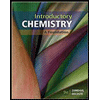 Introductory Chemistry: A FoundationChemistryISBN:9781337399425Author:Steven S. Zumdahl, Donald J. DeCostePublisher:Cengage Learning
Introductory Chemistry: A FoundationChemistryISBN:9781337399425Author:Steven S. Zumdahl, Donald J. DeCostePublisher:Cengage Learning ChemistryChemistryISBN:9781305957404Author:Steven S. Zumdahl, Susan A. Zumdahl, Donald J. DeCostePublisher:Cengage Learning
ChemistryChemistryISBN:9781305957404Author:Steven S. Zumdahl, Susan A. Zumdahl, Donald J. DeCostePublisher:Cengage Learning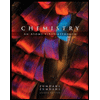 Chemistry: An Atoms First ApproachChemistryISBN:9781305079243Author:Steven S. Zumdahl, Susan A. ZumdahlPublisher:Cengage Learning
Chemistry: An Atoms First ApproachChemistryISBN:9781305079243Author:Steven S. Zumdahl, Susan A. ZumdahlPublisher:Cengage Learning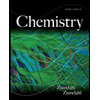
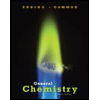 General Chemistry - Standalone book (MindTap Cour...ChemistryISBN:9781305580343Author:Steven D. Gammon, Ebbing, Darrell Ebbing, Steven D., Darrell; Gammon, Darrell Ebbing; Steven D. Gammon, Darrell D.; Gammon, Ebbing; Steven D. Gammon; DarrellPublisher:Cengage Learning
General Chemistry - Standalone book (MindTap Cour...ChemistryISBN:9781305580343Author:Steven D. Gammon, Ebbing, Darrell Ebbing, Steven D., Darrell; Gammon, Darrell Ebbing; Steven D. Gammon, Darrell D.; Gammon, Ebbing; Steven D. Gammon; DarrellPublisher:Cengage Learning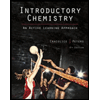 Introductory Chemistry: An Active Learning Approa...ChemistryISBN:9781305079250Author:Mark S. Cracolice, Ed PetersPublisher:Cengage Learning
Introductory Chemistry: An Active Learning Approa...ChemistryISBN:9781305079250Author:Mark S. Cracolice, Ed PetersPublisher:Cengage Learning

Introductory Chemistry: A Foundation
Chemistry
ISBN:9781337399425
Author:Steven S. Zumdahl, Donald J. DeCoste
Publisher:Cengage Learning

Chemistry
Chemistry
ISBN:9781305957404
Author:Steven S. Zumdahl, Susan A. Zumdahl, Donald J. DeCoste
Publisher:Cengage Learning

Chemistry: An Atoms First Approach
Chemistry
ISBN:9781305079243
Author:Steven S. Zumdahl, Susan A. Zumdahl
Publisher:Cengage Learning


General Chemistry - Standalone book (MindTap Cour...
Chemistry
ISBN:9781305580343
Author:Steven D. Gammon, Ebbing, Darrell Ebbing, Steven D., Darrell; Gammon, Darrell Ebbing; Steven D. Gammon, Darrell D.; Gammon, Ebbing; Steven D. Gammon; Darrell
Publisher:Cengage Learning

Introductory Chemistry: An Active Learning Approa...
Chemistry
ISBN:9781305079250
Author:Mark S. Cracolice, Ed Peters
Publisher:Cengage Learning
Atomic Number, Atomic Mass, and the Atomic Structure | How to Pass ChemistryThe Nucleus: Crash Course Chemistry #1; Author: Crash Course;https://www.youtube.com/watch?v=FSyAehMdpyI;License: Standard YouTube License, CC-BY